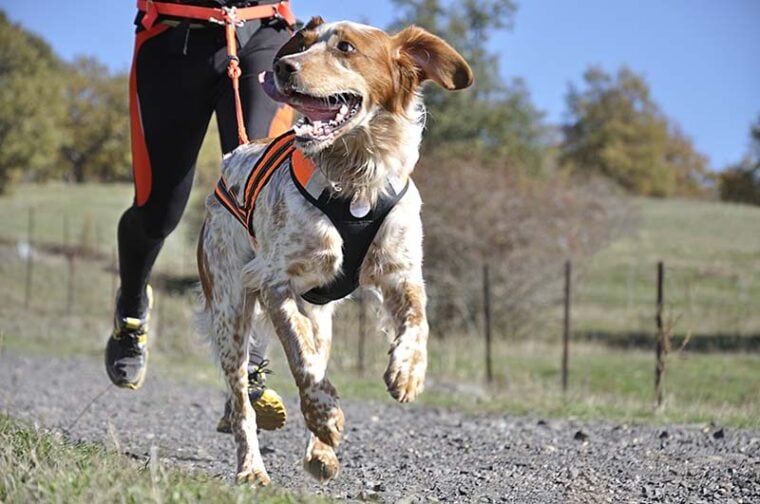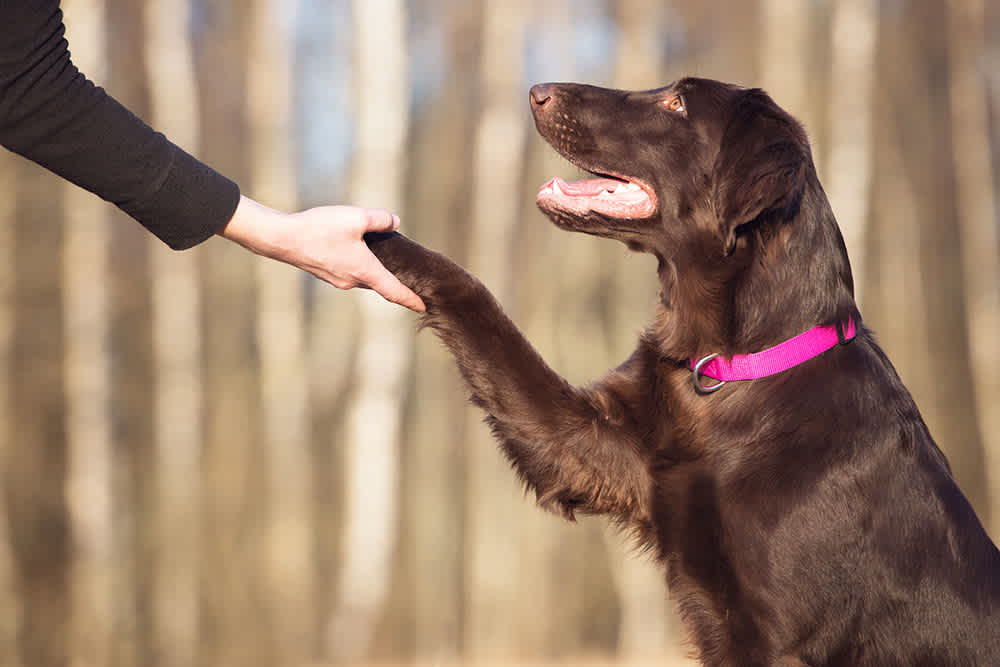Dogs are known for their loyalty and love towards their owners. They are often considered as a part of the family and share a special bond with their humans. But what happens when they get separated from their families? Some dogs have shown incredible determination and traveled long distances to reunite with their loved ones. In this article, we will explore eight incredible stories of dogs traveling long distances to find their families.
:max_bytes(150000):strip_icc()/weimaraner-158558280-2000-7c5267b84af343ba9378fc02ee177178.jpg)
One such story is of a dog named Bobbie, who traveled 2,800 miles to reunite with his family. Bobbie was a two-year-old Scotch Collie who got lost during a family trip in Indiana. Despite searching for him, his family had to return home to Oregon without him. Six months later, Bobbie showed up on their doorstep, emaciated and injured, but alive. It is believed that he traveled through harsh weather conditions and crossed mountains and rivers to reach his family.
Another heartwarming story is of a dog named Zander, who traveled 77 miles to find his owner. Zander was a Husky who was separated from his owner, John Dolan, after he was hospitalized for a skin condition. Despite being left with a friend, Zander escaped and traveled 77 miles to the hospital where John was staying. The hospital staff was surprised to see Zander waiting outside John's room and reunited the two after three weeks of separation.
The Instinct of Homing in Dogs
Understanding Canine Navigation
Dogs have an incredible ability to navigate their surroundings and find their way back home, even when they are miles away. This instinct of homing is believed to be an innate ability that is present in most dogs. It is believed that dogs use a combination of senses, such as smell, sight, and hearing, to navigate their way back home.
One of the most fascinating aspects of canine navigation is their sense of smell. Dogs have an incredible sense of smell that is estimated to be 10,000 to 100,000 times more powerful than that of humans. This sense of smell allows them to detect scents that are miles away, which helps them to find their way back home.

Scientific Theories Behind Long-Distance Homing
Scientists have been studying the phenomenon of long-distance homing in dogs for many years. There are several theories that attempt to explain this incredible ability of dogs.
One theory suggests that dogs use the Earth's magnetic field to navigate their way back home. It is believed that dogs have a special protein in their eyes that allows them to "see" the Earth's magnetic field. This protein helps them to orient themselves and find their way back home.
Another theory suggests that dogs use landmarks and other visual cues to navigate their way back home. Dogs are known to be very observant and are able to remember the visual cues in their surroundings. This helps them to find their way back home, even when they are in unfamiliar territory.
Overall, the instinct of homing in dogs is an incredible ability that has fascinated scientists and dog owners alike for many years. While there are still many mysteries surrounding this ability, it is clear that dogs have an innate sense of direction and are able to navigate their way back home, even when they are miles away.
Historical Accounts of Canine Journeys
Famous War-Time Dog Travellers
Dogs have been used in wars for centuries and have played a significant role in delivering messages and providing comfort to soldiers. One of the most famous war-time dog travelers is Sergeant Stubby, a pit bull terrier who served in World War I. He traveled over 10,000 miles and participated in 17 battles. Stubby even saved his regiment from a gas attack by alerting them and leading them to safety.
Another famous war-time dog traveler is Chips, a German Shepherd/Collie/Husky mix who served in World War II. During the invasion of Sicily, Chips charged a machine-gun nest, forcing the four Italian soldiers to surrender. He was awarded the Silver Star and Purple Heart for his bravery.
Record-Holding Distance Travellers
Some dogs have traveled incredible distances to be reunited with their families. One such dog is Bobbie the Wonder Dog, a Scotch Collie who traveled over 2,500 miles to return to his family in Oregon after being lost in Indiana. He crossed mountains, rivers, and deserts, and finally arrived home after six months.
Another record-holding distance traveler is Togo, a Siberian Husky who traveled over 260 miles to deliver medicine during the 1925 serum run to Nome, Alaska. Togo led his team through blizzards and whiteout conditions, covering the longest and most dangerous part of the journey.
These historical accounts of canine journeys showcase the incredible loyalty and bravery of our furry friends. From war heroes to distance travelers, dogs have proven time and time again that they will go to great lengths to protect and reunite with their loved ones.
Modern-Day Miracles
Dogs have an incredible sense of loyalty and love for their families. They have been known to travel long distances to find their way back home. Here are some modern-day miracles of dogs reuniting with their families.
Social Media Reunions
Social media has played a significant role in reuniting lost dogs with their families. In 2019, a dog named Cleo went missing from her home in Kansas. Her owners searched for her for weeks but had no luck. They then posted her picture on Facebook, hoping someone might have seen her. To their surprise, a woman from Missouri recognized Cleo and contacted the owners. Cleo had traveled over 50 miles to Missouri and was found in a ditch. Thanks to social media, Cleo was reunited with her family.
Cross-Country Canine Adventures
In 2012, a dog named Gobi ran alongside an ultramarathon runner in China. The runner, Dion Leonard, was competing in a 155-mile race when he noticed the little dog keeping up with him. Gobi followed Leonard for four days, covering over 100 miles. The two became inseparable, and Leonard decided to adopt Gobi. However, Gobi went missing before Leonard could take her home. Leonard launched a massive search campaign, and after several days, Gobi was found and reunited with Leonard. The story of Gobi's journey became an international sensation, and Leonard wrote a book about their adventure.

These are just a few examples of the incredible stories of dogs traveling long distances to find their families. It's a testament to the bond between humans and their furry companions.
The Human-Animal Bond
Dogs are known for their loyalty and their ability to form strong bonds with their owners. The bond between humans and dogs is often referred to as the human-animal bond. This bond is so strong that many dogs will go to great lengths to find their families, even if it means traveling long distances.
Psychological Effects on Lost Dogs
When a dog becomes lost, it can be a traumatic experience for both the dog and its family. Dogs are social animals and rely on their owners for comfort and security. When they become separated from their families, they may experience anxiety, fear, and depression.

Research has shown that dogs experience emotions similar to humans, and the loss of their family can have a significant impact on their mental well-being. They may become withdrawn, stop eating, and lose interest in activities they once enjoyed.
The Reunion Impact on Families
The reunion between a lost dog and its family can be a powerful and emotional experience. The joy and relief of being reunited with their beloved pet can have a positive impact on the mental health of the family members.
Studies have shown that owning a pet can have numerous health benefits, including reducing stress and anxiety. The reunion with a lost dog can provide a sense of closure and relief, allowing the family to move forward from the traumatic experience of losing their pet.
In conclusion, the human-animal bond is a powerful and important relationship that should be cherished and nurtured. The incredible stories of dogs traveling long distances to find their families are a testament to the strength of this bond, and the impact that pets can have on our lives.
Survival Skills and Resilience
Dogs are known for their resilience and ability to adapt to diverse environments. When separated from their families, they utilize their survival skills to travel long distances in search of their loved ones. Here are some of the remarkable survival skills and resilience shown by dogs during their journeys.
Adaptation to Diverse Environments
Dogs are known to adapt to diverse environments during their travels. They can travel through forests, deserts, mountains, and even cities. During their journeys, dogs use their sense of smell and hearing to navigate through unfamiliar territories. They also learn to adjust to different weather conditions, such as extreme heat or cold, and find shelter when necessary.
Foraging and Hunting While on the Move
When traveling long distances, dogs need to find food and water to survive. They use their hunting and foraging skills to find food in the wild. Dogs can hunt small animals like rodents or birds, and forage for fruits and vegetables. They also scavenge for food in urban areas, such as garbage cans or dumpsters. Dogs can go without food for several days, but they need access to water to survive. They can drink from rivers, lakes, or even puddles on the road.
Overall, dogs are incredibly resilient and resourceful animals. They use their survival skills to travel long distances and find their families. Their ability to adapt to diverse environments and forage for food and water while on the move is truly remarkable.
Navigation Technology and Dog Tracking
GPS and Microchipping Advancements
Thanks to advancements in GPS and microchipping technology, it is now easier than ever to track lost dogs and reunite them with their families. GPS collars can provide real-time location updates, allowing owners to quickly locate their pets if they wander too far from home. Microchipping, on the other hand, involves inserting a tiny chip under a dog's skin that contains identifying information such as the owner's name and contact details. If a lost dog is found and taken to a shelter or veterinarian, they can scan the microchip and contact the owner.
The Role of Animal Rescue Organizations
Animal rescue organizations also play a crucial role in reuniting lost dogs with their families. Many of these organizations have access to advanced tracking technology and databases that can help locate lost pets. They also work closely with local shelters and veterinarians to share information about lost and found pets. In some cases, animal rescue organizations may even provide transportation services to reunite lost pets with their families, especially if the pet has traveled a long distance.

Overall, the combination of GPS and microchipping technology, along with the efforts of animal rescue organizations, has made it easier than ever to track lost dogs and reunite them with their families. It is important for dog owners to take advantage of these resources to ensure the safety and well-being of their furry friends.
Preparing for the Unexpected
Dog owners know that their furry friends can be unpredictable at times. Even the most well-behaved dogs can get spooked or wander off if they see something interesting. Unfortunately, this can lead to dogs getting lost or separated from their families. However, there are measures that dog owners can take to prepare for unexpected situations and increase the chances of finding their lost pets.
Preventive Measures for Dog Owners
One of the best ways to prevent a dog from getting lost is to ensure that they have proper identification. This includes a collar with a tag that contains the dog's name, address, and phone number. Microchipping is also recommended, as it provides a permanent form of identification that cannot be lost or removed.
Dog owners should also be aware of their surroundings and potential hazards. This includes keeping their dogs on a leash when in public areas, avoiding busy roads and intersections, and keeping an eye out for potential escape routes.
Training Tips for Emergency Situations
In the event that a dog does get lost or separated from its family, there are steps that can be taken to increase the chances of a successful reunion. One of the most important things is to remain calm and focused. Dogs can sense their owner's emotions, and if they sense panic or anxiety, they may become more anxious themselves.

It is also important to have a plan in place in case of an emergency. This includes having a recent photo of the dog, as well as a list of places where the dog may have gone or people who may have seen it. Dog owners should also have a designated meeting place and a phone number where they can be reached in case their dog is found.
Finally, dog owners should consider enrolling their pets in obedience training. This can help to ensure that the dog will respond to commands in emergency situations, such as when it is called or when it needs to be restrained.
By taking these preventive measures and training tips into account, dog owners can increase the chances of a successful reunion with their furry friends in the event of an unexpected situation.
Conclusion
The stories of these eight incredible dogs traveling long distances to find their families are truly heartwarming. Through their determination and unwavering loyalty, they have shown us the true meaning of love and devotion.
These dogs have faced incredible challenges, from traversing vast deserts to crossing treacherous bodies of water. Yet, they never gave up on their quest to be reunited with their loved ones. Their stories serve as a reminder of the incredible bond between humans and dogs.
Each of these dogs has a unique story, but they all share a common thread - their love for their families. They remind us that our pets are not just animals, but members of our families. They deserve our love, care, and protection.
As we reflect on these stories, let us be inspired by the courage and determination of these incredible dogs. Let us honor their memory by treating our own pets with the love and respect they deserve.




